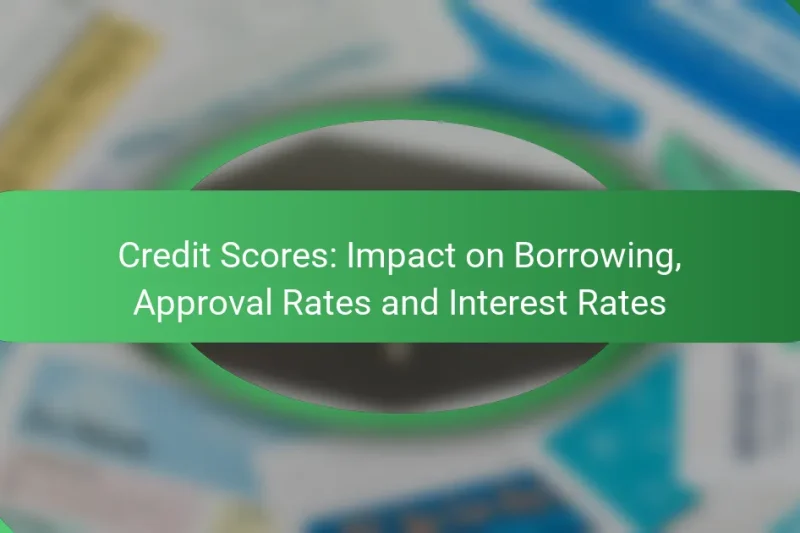Your credit score plays a crucial role in determining your borrowing potential and the terms you … Credit Scores: Impact on Borrowing, Approval Rates and Interest RatesRead more
Wealth Management System: Debt Management
Effective debt management is crucial for maintaining financial stability, and a wealth management system can play a vital role in this process. By offering tools for budgeting, tracking debts, and setting financial goals, these systems empower individuals to make informed decisions and optimize their repayment strategies. With the right resources, users can better understand their financial situation and work towards reducing their overall debt burden.
Debt Traps: Common Pitfalls for Young Professionals and Prevention Tips
Young professionals often face various debt traps that can jeopardize their financial stability. By recognizing these … Debt Traps: Common Pitfalls for Young Professionals and Prevention TipsRead more
Student Loan Management: Strategies for Recent Graduates
Managing student loans can be a daunting task for recent graduates, but with the right strategies, … Student Loan Management: Strategies for Recent GraduatesRead more
Debt Snowball vs. Debt Avalanche: Which Method Works Best
When it comes to managing debt, two popular strategies are the Debt Snowball and Debt Avalanche … Debt Snowball vs. Debt Avalanche: Which Method Works BestRead more
Credit Card Debt: Interest Reduction Strategies, Payment Plans and Negotiation
Managing credit card debt can be challenging, but there are effective strategies to help reduce it. … Credit Card Debt: Interest Reduction Strategies, Payment Plans and NegotiationRead more
Debt Repayment Plan: High-Interest Loans, Budgeting and Timeline
Developing a debt repayment plan for high-interest loans is essential for effective financial management. By assessing … Debt Repayment Plan: High-Interest Loans, Budgeting and TimelineRead more
Debt Consolidation: Options for Homeowners, Benefits and Risks
Debt consolidation presents homeowners with various options to streamline their financial obligations and potentially lower interest … Debt Consolidation: Options for Homeowners, Benefits and RisksRead more
What are effective debt management strategies in Australia?
Effective debt management strategies in Australia include consolidating debts, budgeting, negotiating with creditors, and employing specific repayment methods. These approaches help individuals manage their financial obligations more efficiently and reduce overall debt burden.
Debt consolidation
Debt consolidation involves combining multiple debts into a single loan, often with a lower interest rate. This simplifies payments and can reduce monthly obligations, making it easier to manage finances. In Australia, options include personal loans, balance transfer credit cards, or home equity loans.
Before consolidating, assess the total costs, including fees and interest rates. Ensure that the new loan terms are favorable compared to existing debts to avoid further financial strain.
Budgeting techniques
Effective budgeting techniques are crucial for managing debt. Start by tracking income and expenses to identify spending patterns and areas for reduction. Tools like budgeting apps or spreadsheets can help visualize financial situations.
Consider the 50/30/20 rule: allocate 50% of income to needs, 30% to wants, and 20% to savings and debt repayment. Adjust these percentages based on personal circumstances to create a realistic budget.
Negotiating with creditors
Negotiating with creditors can lead to lower interest rates, reduced payments, or even debt forgiveness. Contact creditors directly to discuss your situation and express willingness to work out a manageable payment plan.
Prepare for negotiations by gathering financial documents and understanding your rights under Australian consumer law. Be honest about your financial difficulties and propose a realistic repayment plan that you can adhere to.
Debt snowball method
The debt snowball method focuses on paying off the smallest debts first to build momentum. List all debts from smallest to largest, make minimum payments on all but the smallest, and direct extra funds to the smallest debt until it is paid off.
This method can provide psychological benefits, as clearing smaller debts quickly can motivate individuals to tackle larger ones. However, it may not always be the most cost-effective approach, as it doesn’t prioritize higher interest debts.
Debt avalanche method
The debt avalanche method prioritizes debts with the highest interest rates, potentially saving more money over time. List debts from highest to lowest interest, make minimum payments on all but the highest, and allocate extra funds to the highest interest debt until it is cleared.
This strategy is mathematically advantageous, as it reduces the total interest paid. However, it may take longer to see progress, which can be discouraging for some individuals. Balancing motivation with financial efficiency is key.
How can a wealth management system assist with debt management?
A wealth management system can significantly enhance debt management by providing tools for budgeting, tracking debts, and setting financial goals. These features help individuals understand their financial situation better and make informed decisions to reduce or eliminate debt.
Automated budgeting tools
Automated budgeting tools help users create and maintain a budget by tracking income and expenses in real-time. These tools often categorize spending, allowing users to see where their money goes and identify areas to cut back.
For effective debt management, it’s crucial to allocate a portion of the budget specifically for debt repayment. Setting limits on discretionary spending can free up funds to pay down debts faster, which can be particularly beneficial in high-interest scenarios.
Debt tracking features
Debt tracking features allow users to monitor their outstanding debts, including balances, interest rates, and payment due dates. This visibility helps users prioritize which debts to pay off first, often focusing on those with the highest interest rates.
Some systems provide alerts for upcoming payments, reducing the risk of late fees and negative credit impacts. Regularly reviewing debt status can motivate users to stay on track with their repayment plans.
Financial goal setting
Financial goal setting within a wealth management system enables users to define specific, measurable objectives related to debt reduction. Goals can include paying off a credit card within a set timeframe or saving a certain amount for an emergency fund.
By breaking down larger goals into smaller, achievable steps, users can maintain motivation and track progress. Regularly revisiting and adjusting these goals ensures they remain realistic and aligned with changing financial circumstances.
What are the benefits of using a wealth management system for debt management?
A wealth management system enhances debt management by providing structured tools and resources to track, analyze, and optimize debt repayment strategies. Users can gain insights into their financial status, leading to more informed decisions and improved financial health.
Improved financial visibility
Wealth management systems offer comprehensive dashboards that display all debts, interest rates, and payment schedules in one place. This visibility allows users to identify high-interest debts and prioritize payments effectively. By understanding their financial landscape, individuals can make better budgeting decisions and avoid unnecessary fees.
For example, a user can see at a glance how much they owe on credit cards versus student loans, enabling them to allocate funds more strategically. Regularly reviewing this information helps maintain awareness of financial obligations and progress towards debt reduction.
Personalized debt repayment plans
These systems can create tailored repayment plans based on individual financial situations and goals. By inputting income, expenses, and debt details, users receive customized strategies that suggest optimal payment amounts and timelines. This personalization can significantly reduce the time required to pay off debts.
For instance, a wealth management system might recommend a snowball method for someone with multiple small debts, encouraging them to pay off the smallest first for quick wins. Alternatively, it may suggest a debt avalanche approach for those looking to minimize interest payments over time.
Access to financial advisors
Many wealth management systems provide users with access to financial advisors who can offer expert guidance on debt management. These professionals can help users understand complex financial products and recommend strategies tailored to their unique circumstances. This support can be invaluable, especially for those feeling overwhelmed by their debt situation.
Additionally, having a financial advisor can help users stay accountable to their repayment plans and adjust strategies as financial situations change. Regular check-ins can ensure that users remain on track and adapt to any new challenges or opportunities that arise.
What criteria should you consider when choosing a wealth management system?
When selecting a wealth management system, consider factors such as cost, features, and user feedback. These elements will help you determine which system best aligns with your financial goals and management style.
Cost and fees
The cost of a wealth management system can vary widely, often ranging from a few hundred to several thousand dollars annually. Be sure to evaluate both upfront fees and ongoing costs, such as subscription or transaction fees.
Look for transparent pricing structures and consider whether the fees are justified by the services provided. Some systems may offer tiered pricing based on the level of service or features included, so assess your needs carefully.
Features and tools
Different wealth management systems offer a variety of features, such as portfolio tracking, financial planning tools, and tax optimization strategies. Identify which tools are essential for your financial management and ensure the system you choose includes them.
Additionally, consider the user interface and ease of use. A system that is intuitive and user-friendly can significantly enhance your experience and efficiency in managing your wealth.
User reviews and ratings
User reviews and ratings provide valuable insights into the performance and reliability of a wealth management system. Look for feedback on customer service, ease of use, and overall satisfaction to gauge how well the system meets user needs.
Check multiple sources for reviews, including independent review sites and forums, to get a well-rounded perspective. Pay attention to recurring themes in the feedback, as these can highlight strengths and weaknesses that may impact your decision.
What are the top wealth management systems for debt management in Australia?
The leading wealth management systems for debt management in Australia focus on helping individuals effectively manage their debts while optimizing their financial health. These systems provide tools for tracking debts, creating repayment plans, and offering insights into personal finance management.
Wealthfront
Wealthfront is a popular wealth management platform that offers automated investment and financial planning services, including debt management tools. Users can link their financial accounts to assess their total debt and receive tailored advice on repayment strategies.
One key feature of Wealthfront is its ability to create a personalized financial plan that includes debt repayment goals. This helps users prioritize high-interest debts while also considering their overall investment strategy. It’s essential to regularly review your plan to adapt to any changes in your financial situation.
Betterment
Betterment is another leading wealth management system that emphasizes holistic financial planning, including debt management. It provides users with insights into their debts and helps them develop a strategy to pay them off efficiently.
Betterment’s debt management tools allow users to visualize their debt repayment timeline and set specific goals. By focusing on the highest interest debts first, users can save on interest payments over time. It’s advisable to take advantage of Betterment’s educational resources to enhance your understanding of effective debt management techniques.






